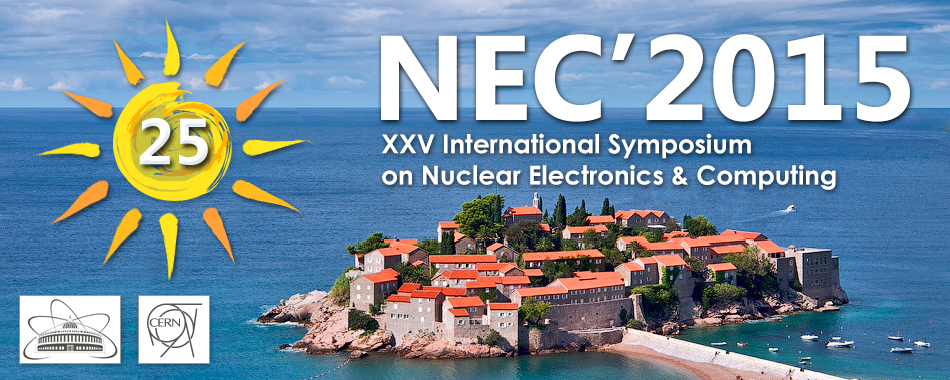Speaker
Dr
Maxim Karetnikov
(All-Russia Research Institute of Automatics)
Description
At the T(d,n)He4 reaction each 14 MeV neutron is accompanied (tagged) by 3.5 MeV alpha- particle emitted in the opposite direction. A position- and time-sensitive alpha-detector measures time and coordinates of the associated alpha particle which allows determining time and direction of neutron escape. A spectrum of gamma-rays emitted at the interaction of tagged neutrons with nuclei of chemical elements allows identify a chemical composition of irradiated object. The recording of alpha-gamma coincidences in a very narrow time window provides the possibility of background suppression by spatial and time discrimination of events. The Nanosecond Tagged Neutron Technology (NTNT) based on this principle has great potentialities for various application, e.g., for remote detection of explosives, exploration of diamond pipes, etc.
For practical realization of NTNT, the time resolution of gamma-rays recording with respect to the alpha- particles recording should be close to 1 ns. The total intensity of signals can exceed 1∙106 1/s from all gamma-detectors and 1∙107 1/s from the alpha-detector. The processing of such stream of data without losses and distortion of information is one of challenging problems of NTNT. At present, two approaches for the DAQ system of NTNT devices are used: (1) preliminary online selection of pulses by hardware and transmission of only useful events to a computer and (2) complete digitization of signals from all detectors and data-stream transmission to the computer for subsequent processing. In this study, we used the first approach based on the hardware selection of useful events according to specified criteria. The main selection criterion is the presence of signals from alpha- and gamma- detectors within the preset time and amplitude ranges in the absence of overlapped events.
Several models of DAQ system were produced and their characteristics are examined. The architecture of the multidetector system is considered. The comparison with the “digital” DAQ systems demonstrated the “analog” DAQ provides better timing parameters, energy consumption and limited rate of useful events.
Author
Dr
Maxim Karetnikov
(All-Russia Research Institute of Automatics)
Co-authors
Dr
Anatoliy Klimov
(National Research Center “Kurchatov Institute”)
Dr
Evgueni Meleshko
(National Research Centre “Kurchatov Institute”)
Mr
Kirill Balygin
(All-Russia Research Institute of Automatics)
Mr
Vladimir Zaitsev
(All-Russia Research Institute of Automatics)

